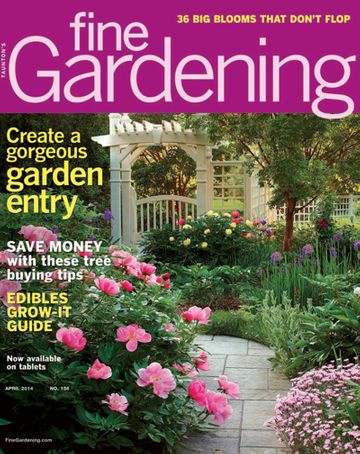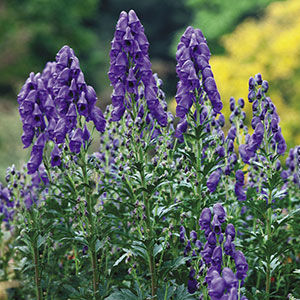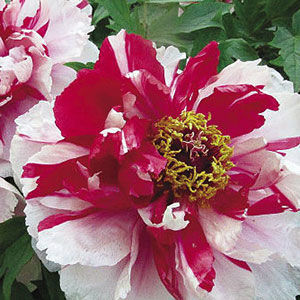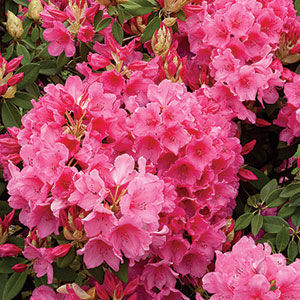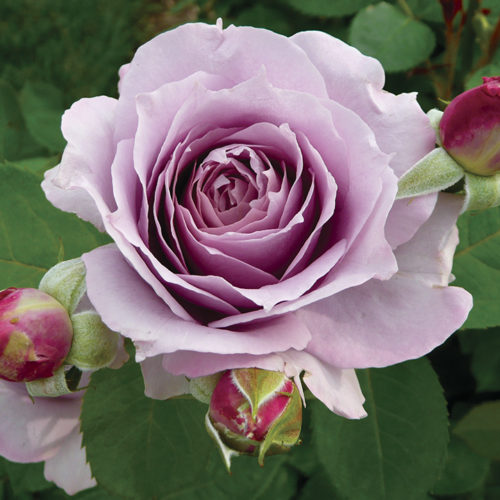Fine Gardening – Issue 156
-
Regional Picks: Big Blooms That Don’t Flop - Northeast
1. ‘Gateway’ Joe Pye Weed Name: Eupatorium maculatum ‘Gateway’ USDA Hardiness Zones: 5 to 11 Size: 4 to 6 feet tall and 3 to 5 feet wide Conditions: Full sun…
-
Regional Picks: Big Blooms That Don’t Flop - Midwest
1. Summerific® ‘Cranberry Crush’ Perennial Hibiscus Name: Hibiscus ‘Cranberry Crush’ USDA Hardiness Zones: 4 to 9 Size: 3 to 4 feet tall and 4 to 5 feet wide Conditions: Full…
-
Regional Picks: Big Blooms That Don’t Flop - South
1. Tiger Lily Name: Lilium lancifolium USDA Hardiness Zones: 3 to 9 Size: 4 to 5 feet tall and 2 feet wide Conditions: Full sun; well-drained soil This is not…
-
Regional Picks: Big Blooms That Don’t Flop - Southern Plains
1. Chinese Fringe Tree Name: Chionanthus retusus USDA Hardiness Zones: 5 to 9 Size: 15 to 20 feet tall and 20 to 25 feet wide Conditions: Full sun to partial…
-
Regional Picks: Big Blooms That Don’t Flop - Southwest
1. Prickly Poppy Name: Argemone spp. and cvs. USDA Hardiness Zones: 8 to 11 Size: 18 to 36 inches tall and wide Conditions: Full sun; lean, sandy soil Prickly poppy…
-
Regional Picks: Big Blooms That Don’t Flop - Mountain West
1. ‘Big Blue’ Sea Holly Name: Eryngium ‘Big Blue’ USDA Hardiness Zones: 4 to 9 Size: 28 to 30 inches tall and 15 to 18 inches wide Conditions: Full sun;…
-
Regional Picks: Big Blooms That Don’t Flop - Northwest
1. ‘Band of Nobles’ Lupine Name: Lupinus ‘Band of Nobles’ USDA Hardiness Zones: 5 to 8 Size: 3 to 5 feet tall and 2 to 3 feet wide Conditions: Full…
-
Easy, Picture-Perfect Roses
Have you ever looked through a rose catalog and longed for those gorgeous blooms? You order one, wait impatiently for the day it arrives, and then finally get to give…
-
Growing Asparagus
As a perennial, asparagus requires more up-front investment than any other vegetable. But the long-term payoff is that once established, an asparagus bed can, with minimal maintenance, produce for 15…
-
Had Trouble With Your Beans?
Although no one knows for sure who the first person was to start eating the immature succulent pods of legumes, it was likely some worker sweating away in a field…
Featured Articles
-
Grow More Flowers to Harvest More Food
We have all watched pollinators go about their business with flowers. But just how—if at all—do they work in conjunction with the vegetable garden? And will the addition of flowers…
-
Breaking the Rules
Whether I am visiting a public garden or in a landscape created by nature, I think about what makes these places special. I inevitably conclude that the gardens I love…
-
How to Buy a Tree
Trees are generally the priciest and most permanent plants gardeners will buy in their lifetime, so most of us want to ensure that the one we select at the nursery…
-
Big Blooms That Don’t Flop
Like most gardeners, I swoon at the sight of a border filled with towering delphiniums, head-high dahlias, and deliciously fragrant peonies. These are the coveted candies of the quintessential cottage…
-
Designing With Green
This ubiquitous color, when used well, can be just as exciting as vibrant flowers
-
An Enchanting First Impression
Like many modern houses, Gail Gee’s suburban home in Fulton, Maryland (USDA Hardiness Zone 7), features a front door well away from and out of sight of the driveway where…

